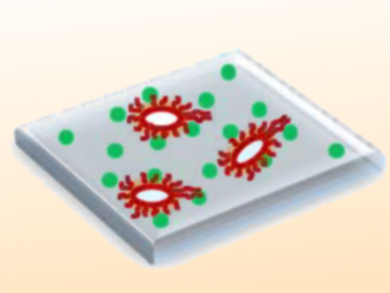Chitosan, a polysaccharide derived from chitin, has antibacterial and antifungal properties and can be used in medical applications or to preserve food. N-Halamines (R2NCl, R2NBr, etc.) can likewise be used as antimicrobial agents. They can release the free halogen in aqueous media and thus inactivate bacteria. After use, they can be reactivated by, e.g., common household bleach (sodium hypochlorite).
Xuehong Ren, Jiangnan University, Wuxi, Jiangsu, China, and colleagues have combined chtiosan and N-halamines and incorporated them into an antimicrobial poly(vinyl alcohol) (PVA) film. To this end, the team added 1-hydroxymethyl-5,5-dimethylhydantoin (HDH) groups, which act as the N-halamine component, to chitosan by dissolving the two compounds in glacial acetic acid and stirring at 100 °C for 24 hours. The resulting modified chitosan (CS-HDH) was turned into nanosized spheres by crosslinking with sodium tripolyphosphate (TPP). The nanospheres were chlorinated by soaking them in a 5 % solution of household bleach for two hours. In a final step, the CS-HDH nanospheres were combined with a PVA solution and poured into a teflon mold to give the antibacterial films.
The researchers tested the antibacterial properties of the material and found that the hybrid films efficiently inactivated Staphylococcus aureus and Escherichia coli within five minutes. The films were thermally and mechanically stable, and could have applications in food packaging and as biomaterials.
- Preparation and characterization of antimicrobial PVA hybrid films with N-halamine modified chitosan nanospheres,
Maoli Yin, Xiaoli Chen, Rong Li, Dan Huang, Xiaoyan Fan, Xuehong Ren, Tung-Shi Huang,
J. Appl. Polym. Sci. 2016.
DOI: 10.1002/app.44204



